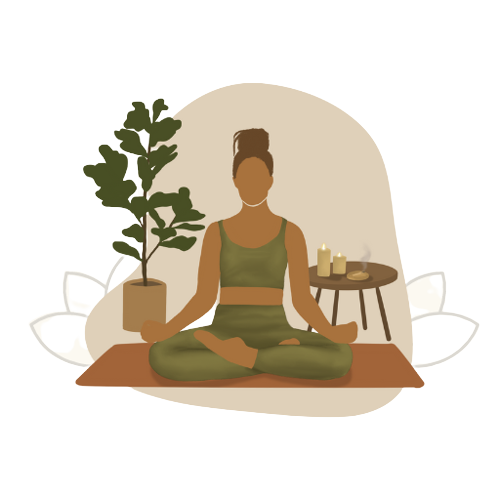Introduction
Mindfulness is more than a practice; it’s a profound state of awareness encompassing the body, mind, and surroundings. Rooted in ancient wisdom and validated by modern science, mindfulness and meditation offer a path to elevated consciousness, akin to the transcendent states sought in practices like Samadhi.
In this blog, we aim to demystify mindfulness for beginners, presenting simple techniques and dispelling myths that may hinder initial exploration. lets begin your mindfulness odyssey!
Table of Contents
Section 1: Understanding Mindfulness
Mindfulness, as defined by Kabat-Zinn, is “awareness that arises through paying attention, on purpose, in the present moment, non-judgmentally.” This awareness stems from three fundamental principles:
(a) Paying attention,
(b) On purpose, and
(c) Non-judgmentally.
For beginners, the crux lies in paying attention to the present moment with a clear focus on self-awareness.
Imagine your thoughts as fleeting waves, obscuring the clear reality beneath. The goal of mindfulness is to navigate through these waves, revealing the undistorted reality of self and the world. Paying attention on purpose ensures a holistic awareness, acknowledging both preferences and discomforts without judgment.
Section 2: The Science Behind Mindfulness

The intricate dance of the brain reveals the transformative impact of mindfulness. From protecting the hippocampus and promoting neurogenesis to remodeling the cortex for self-awareness, empathy, and introspection, mindfulness is a cognitive marvel. Emotional regulation in the prefrontal cortex and the soothing of the amygdala’s reactivity showcase the profound positive remodeling facilitated by mindfulness.
Section 3: Benefits of Mindfulness for Beginners
Mindfulness not only impacts brain functionality but also benefits daily life by reducing stress and enhancing focus. Ancient wisdom suggests that mindfulness can elevate life by fostering an awareness of self distinct from the surrounding scene—a powerful advantage for personal growth.
Section 4: Overcoming Mindfulness Myths and Misconceptions
Dispelling myths is crucial for embracing mindfulness fully. One prevalent myth is that mindfulness is about emptying the mind. In truth, it involves acknowledging thoughts without judgment, appreciating the gaps between them. Another myth is that mindfulness is solely cultivated through meditation. While meditation is a powerful tool, mindfulness extends beyond it, becoming a state of being rather than a mere practice.
Section 5: Mindfulness Techniques for Beginners

Now, let’s delve into practical mindfulness techniques for beginners:
(a) Body Scanning Method: Close your eyes and relax each part of your body, fostering awareness of bodily sensations.
(b) Mindful Listening: Close your eyes and listen to all sounds around you, embracing the sensory input.
(c) Mindful Walking: Be aware of each step, sound, and smell while walking, engaging multiple senses simultaneously.
(d) Reading with Touch: Read a book with your fingers, focusing on the sensations of touch to enhance mindfulness.
(e) Mindful Breathing: Focus on your breath without attaching thoughts, acknowledging and redirecting your focus when distractions arise.
These techniques provide a foundation for mindfulness, encouraging a compassionate and patient approach to this skill.
Section 6: Embarking on Your Mindfulness Odyssey: Your Personal Roadmap
Remember, mindfulness is a path, not a destination. There will be stumbles and wandering thoughts, but that’s okay! Be gentle with yourself and celebrate each step you take.
Here are some tips for your mindful adventure:
- Start small: Begin with a few minutes of mindful breathing or a mindful walk each day.
- Find your practice: Experiment with different techniques and find what resonates with you.
- Be patient: Don’t get discouraged if your mind wanders. Gently bring your attention back to the present moment.
- Join a community: Connect with others on their mindfulness journeys. Sharing experiences and support can be incredibly valuable.
Embrace the stillness, savor the present, and watch your inner garden bloom.
Additional Resources:
- Mindful.org
- Headspace
- The Mindful Revolution
- 10% Happier
- Wherever You Go, There You Are by Jon Kabat-Zinn
Conclusion
Embarking on a mindfulness odyssey promises transformative change. Beginners are not just engaging in mental exercises; they are laying the foundation for a more harmonious and intentional way of being. Embrace simplicity and consistency, starting with short sessions and gradually expanding. Whether through meditation, body scans, or walking, mindfulness invites you to rediscover the richness of each moment. Your journey to mindfulness begins now—embrace the simplicity, savor the stillness, and let mindfulness infuse every facet of your being.
Remember, the seeds of mindfulness are already within you. Take the first step, subscribe to monkmethods.com, and watch your inner garden bloom!





